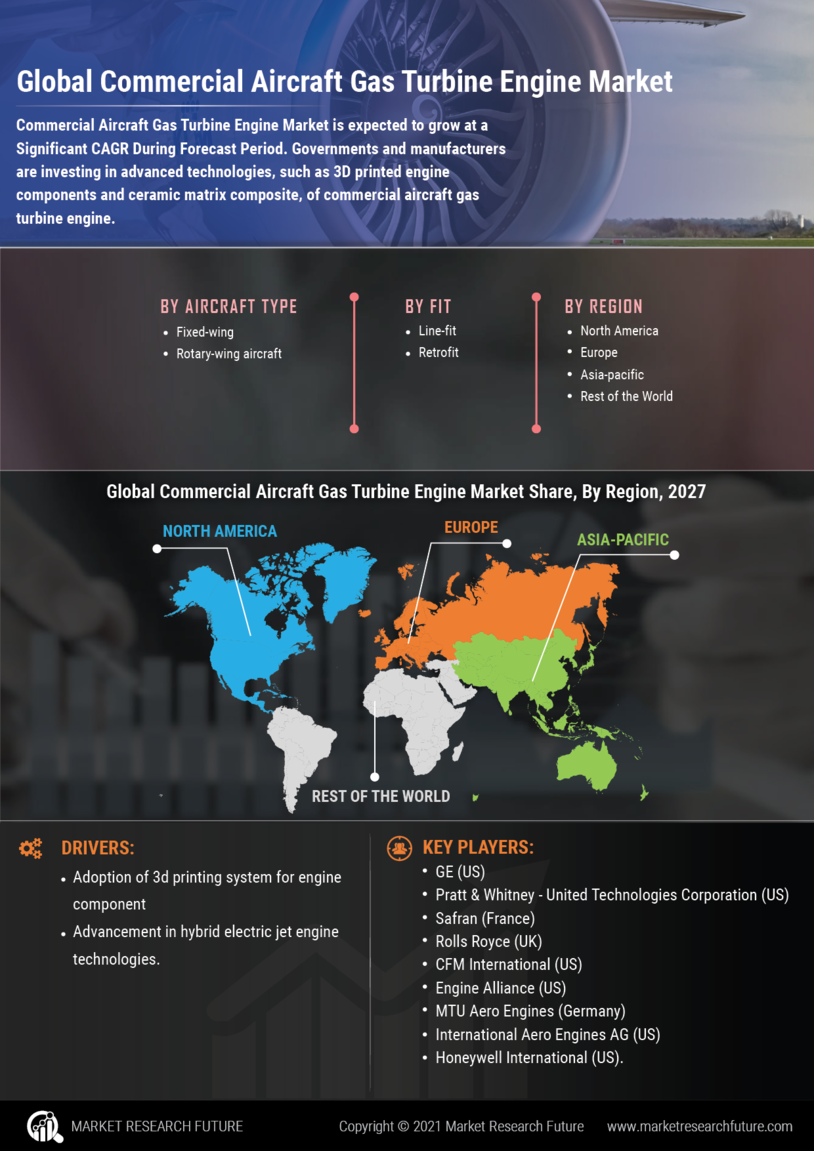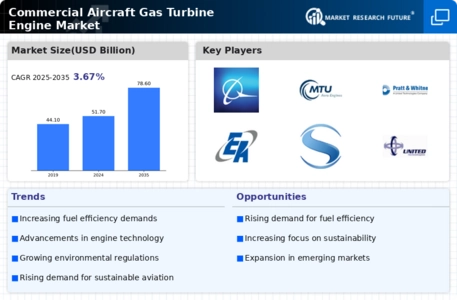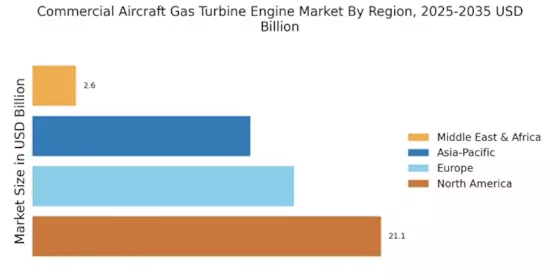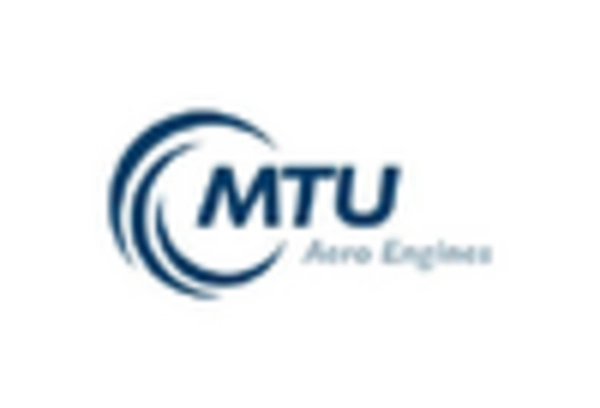Commercial Aircraft Gas Turbine Engine Market Summary
As per MRFR analysis, the Commercial Aircraft Gas Turbine Engine Market Size was estimated at 52.81 USD Billion in 2024. The Commercial Aircraft Gas Turbine Engine industry is projected to grow from 54.75 USD Billion in 2025 to 78.5 USD Billion by 2035, exhibiting a compound annual growth rate (CAGR) of 3.67 during the forecast period 2025 - 2035.
Key Market Trends & Highlights
The Commercial Aircraft Gas Turbine Engine Market is poised for growth driven by sustainability and technological advancements.
- North America remains the largest market for commercial aircraft gas turbine engines, reflecting robust demand in the aviation sector.
- The Asia-Pacific region is emerging as the fastest-growing market, fueled by increasing air travel and regional economic development.
- Turbofan engines dominate the market, while turboprop engines are experiencing rapid growth due to their efficiency in regional flights.
- Key market drivers include the rising demand for fuel efficiency and compliance with stringent regulatory and environmental standards.
Market Size & Forecast
| 2024 Market Size | 52.81 (USD Billion) |
| 2035 Market Size | 78.5 (USD Billion) |
| CAGR (2025 - 2035) | 3.67% |
Major Players
General Electric (US), Rolls-Royce (GB), Pratt & Whitney (US), Safran (FR), Honeywell (US), MTU Aero Engines (DE), Engine Alliance (US), International Aero Engines (US), Kawasaki Heavy Industries (JP)


















Leave a Comment